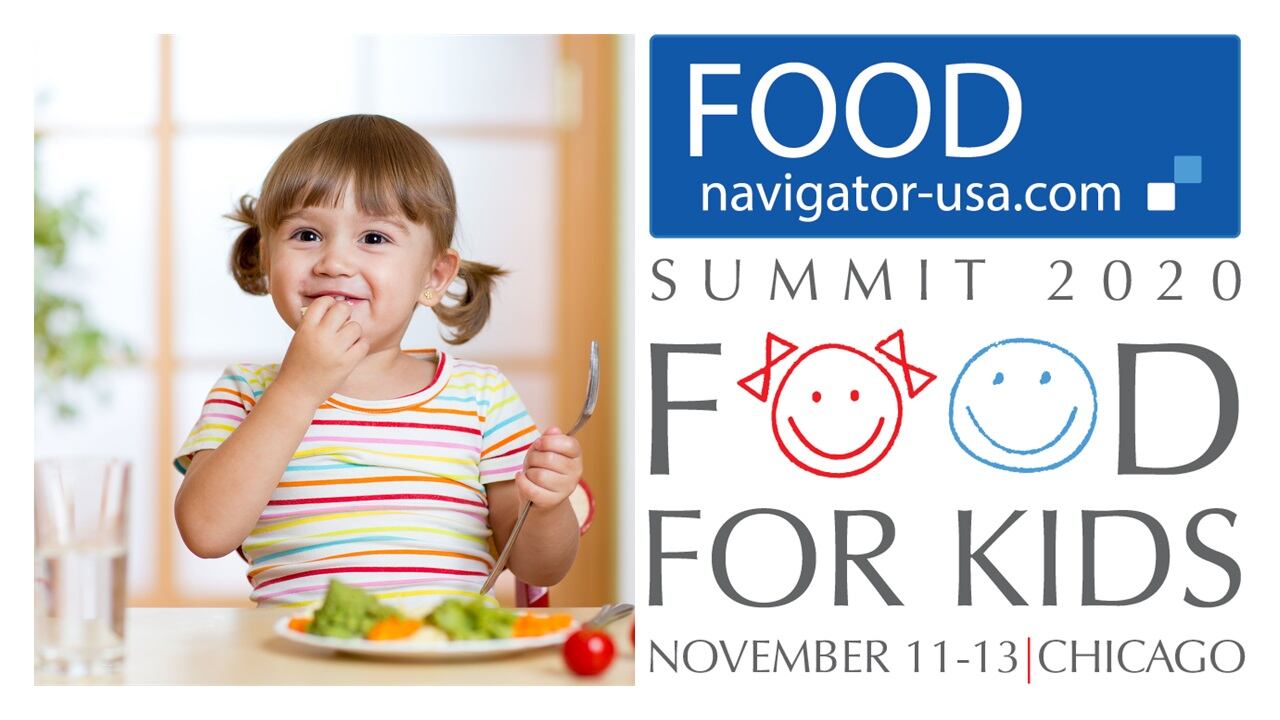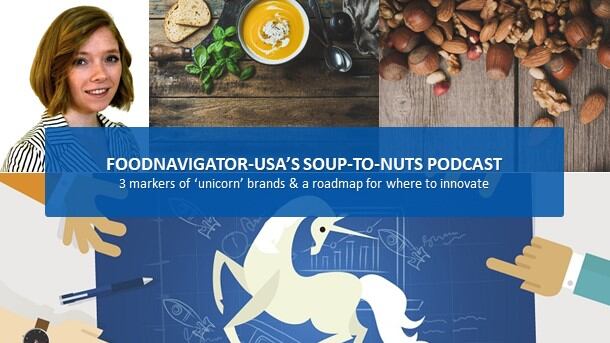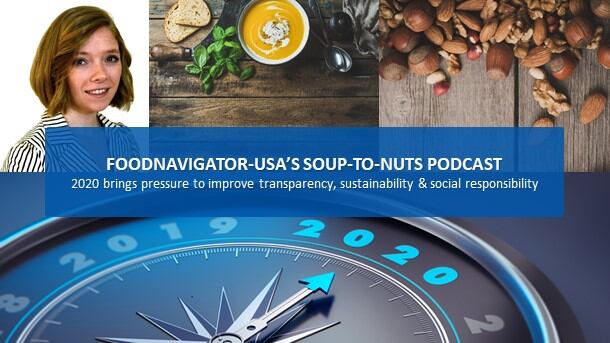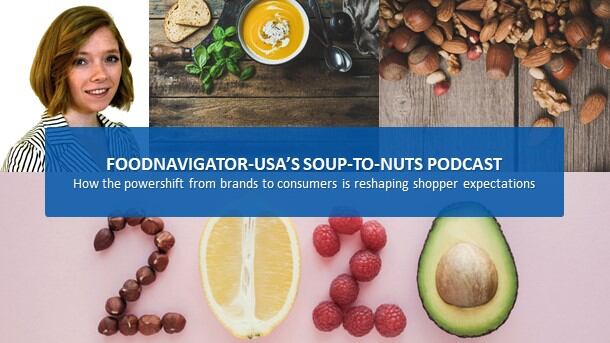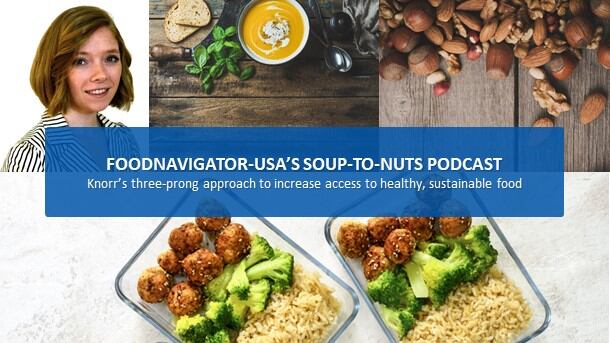Paul Earle, Jr, the principle of the innovation firm Earle & Company, writes in his book ‘A Front Row Seat at the Revolution’ that “there is a full-on revolution unfolding in the consumer products world … with consumer preferences changing and other conditions emerging making it easier than ever for entrepreneurs to enter once-forbidden territory” and steal market share, consumer loyalty and media attention from long-time category leaders.
Much like many food and beverage industry players, Earle said he was flummoxed by how companies like RXBAR, Beyond Meat, Halo Top and others could so quickly captivate consumers, secure massive distribution and sales and utterly disrupt categories led by companies that had reigned at the top for decades unrivaled.
Pushed to find out what “these new brand rocket ships have in common,” Earle spent a year traveling the US, interviewing and profiling 12 break-out brands for Forbes and his book to discover their secrets to their success. In this episode of FoodNavigator-USA’s Soup-To-Nuts Podcast, Paul shares three ‘markers for disruption’ that each brand has in common and which can serve as a guidepost for other entrepreneurs hoping to follow their lead. Sean Bisceglia of the Chicago-based consumer insight and product testing firm Curion also weighs in on how changing consumer preferences factors into these macro-shifts, and shares a couple of hot categories to watch for ongoing innovation in the near future.
[Editor’s Note: If you enjoy FoodNavigator-USA’s Soup-To-Nuts podcast, be sure to subscribe to us on iTunes so you never miss an episode.]
Nothing is sacred any more
As recently as 10 year ago, Earle says there were some food and beverage products – and even entire categories – that were considered off limits for new companies to go up against because the leading legacy brand so firmly dominated.
But, he adds, that is all changing now.
“In the world of consumer brands, all bets are off. There are categories that were considered off limits not that long ago that are now in play,” he said, pointing to ketchup, mayonnaise and mustard as a few examples that Sir Kensington has disrupted.
Earle attributes this shift in part to consumers wanting to buy not just a product that they like, but from a brand or company they like. Ecommerce and social media also are opening the door for newcomers to challenge legacy brands more effectively.
While these factors may help new companies attract consumers, Bisceglia adds that to keep people coming back the products need to taste good and meet consumers’ higher nutritional and dietary standards, which is something Curion excels at helping brands achieve.
Three markers for successful distribution
Beyond the changing landscape, Earle says startups that are successfully disrupting the status quo and stealing market share from long-standing food and beverage leaders have three “markers” in common.
The first is that they are radically different from their competitors. For example, he pointed to Halo Top which was “spectacularly better than any other option out there” for consumers counting their calories.
The second is they are dedicated to design, which is often “rule-breaking,” Earle said. “They do not play by the rules or orthodoxies of a category, in some cases because they have no regard for rules, and in other cases they don’t even know what they are. So, they’re bucking convention without even knowing that they are bucking convention. They’re just designing stuff that seems right and looks beautiful and inspired.”
The third marker, or commonality between the break-out brands Earle studied, is that “they’re all a little bit quirky,” he said. “What big companies tend to do with their antiquated research is kind of strip out all of the elements of the extreme ends of the bell curve … and regress to the middle,” which Earle says “is not where big ideas come from.”
Capturing the “wonderful, magical, unusual elements of flavor and sensory experience,” as Earle put it, is exactly what Curion helps companies do. Bisceglia explains Curion’s secret for finding these elements rests in uncovering they ‘why’ behind consumer preferences.
He explained that the reason consumers like a product is not just because it is more salty, bitter or smooth, but rather because it is something unexpected and brings then joy or pleasure. Uncovering that connection can help brands develop winning products.
In addition to hitting these markers, Earle says brands need to develop a “fanatical following” in order to disrupt the status quo. He noted that all big brands once started as small brands with dedicated followers – a truth that should encourage newcomers to cultivate relationships with their buyers with an eye towards the future.
From beer to children’s food – there is plenty of room for disruption
Even with all of these markers and a fanatical following, some areas are more primed for disruption than others. Reflecting on Curion’s work, Bisceglia says he sees two – very different – categories that are ripe for innovation.
The first is the alcohol, spirits and carbonated beverage set, which he says is quickly expanding beyond the expected set of ingredients to include novel flavors and even functional benefits from unexpected ingredients.
The second area that is undergoing a renaissance is the children’s food category, he said. In particular, new brands are creating healthier but still approachable options for children, who often are more adventurous and willing to eat nutritious food than adults give them credit for. In part, he noted, because they don’t have an ingrained bias towards unhealthy treats – that tends to be a learned behavior.
[Editor’s Note: If you are interested in learning more about the opportunities in the children’s food and beverage segment, join FoodNavigator-USA in Chicago Nov. 11-13 for our third Food For Kids Summit. Learn more by visiting www.foodnavigatorusasummit.com.]
Earle also sees significant potential for innovation and disruption in categories struggling with sustainability, in need of a high-end luxury option or inexpensive value item, and that currently underdeveloped online.
“Opportunity abounds. It’s an incredibly exciting time to be in this business,” he said, adding, “I truly believe that as far as the revolution is concerned, we are literally just starting. This is the beginning, not the end … and I think the consumer world is going to look completely different in 10 years or maybe in five years than it does today.”
